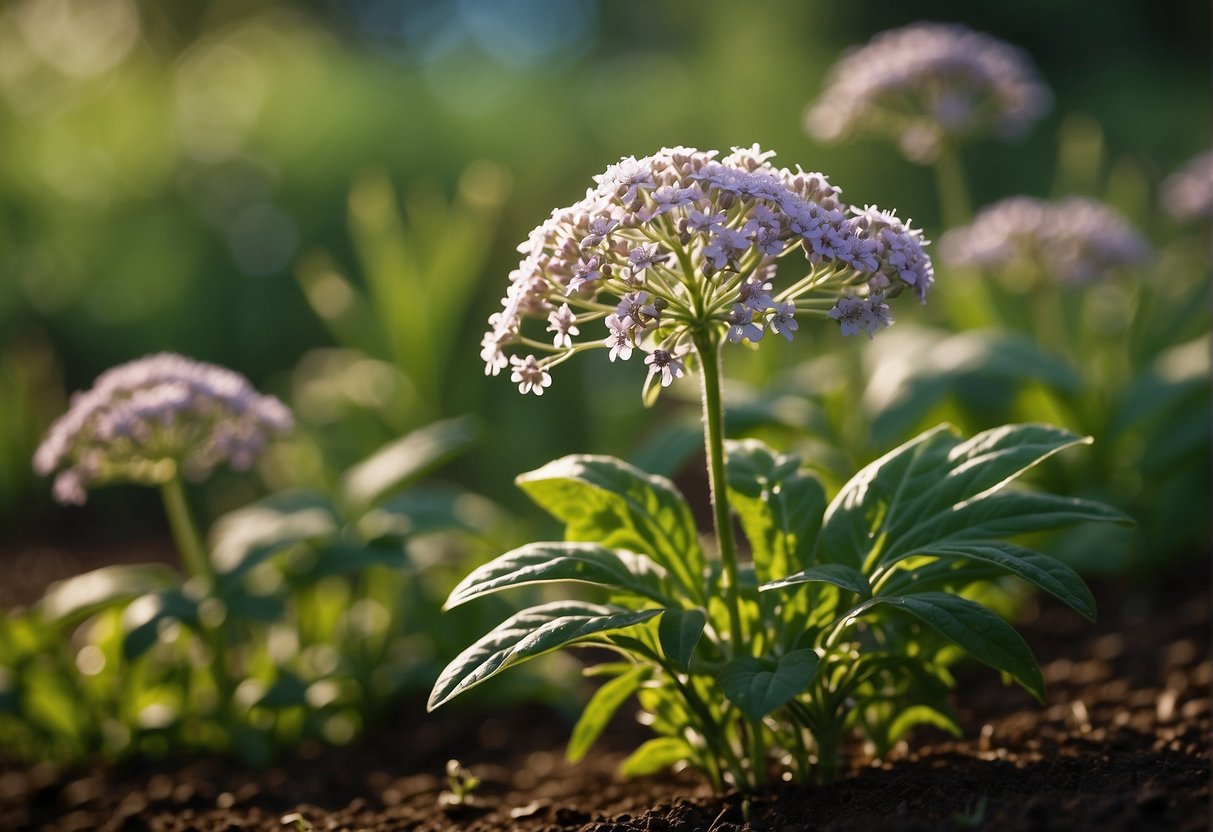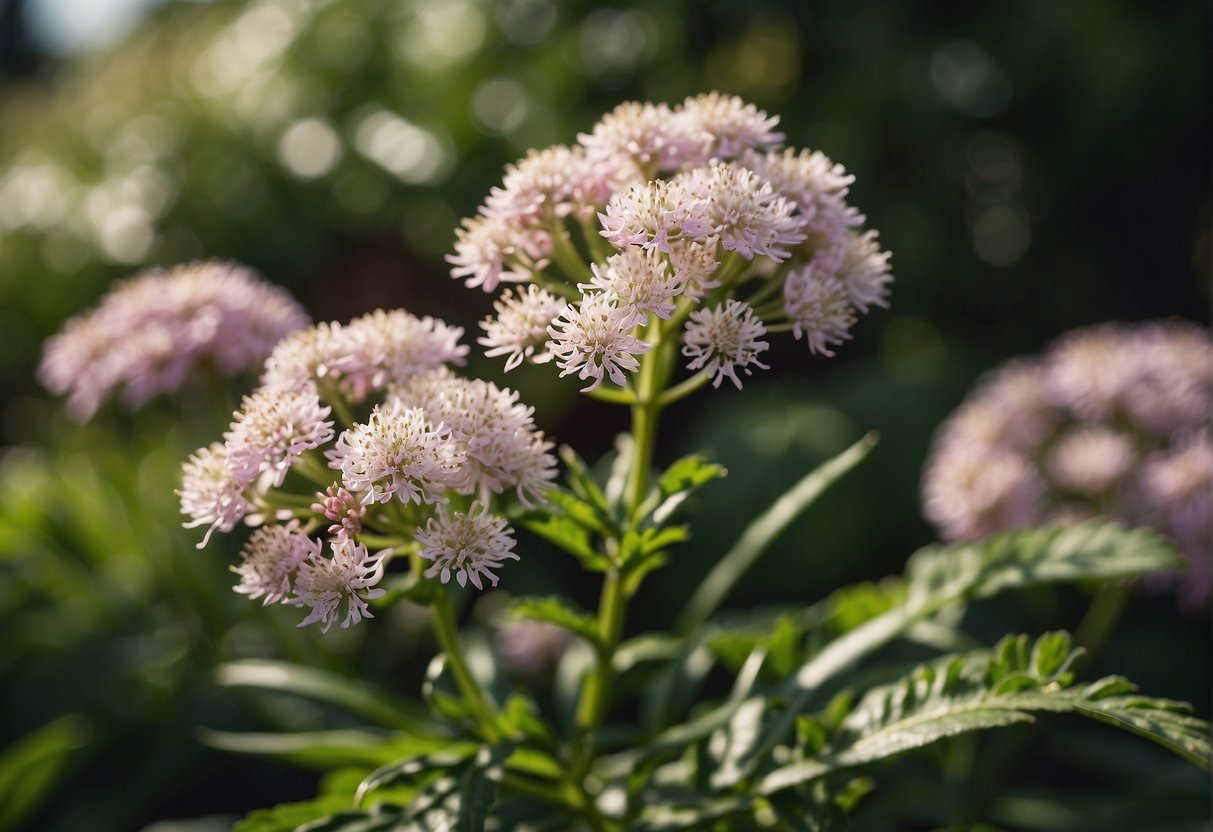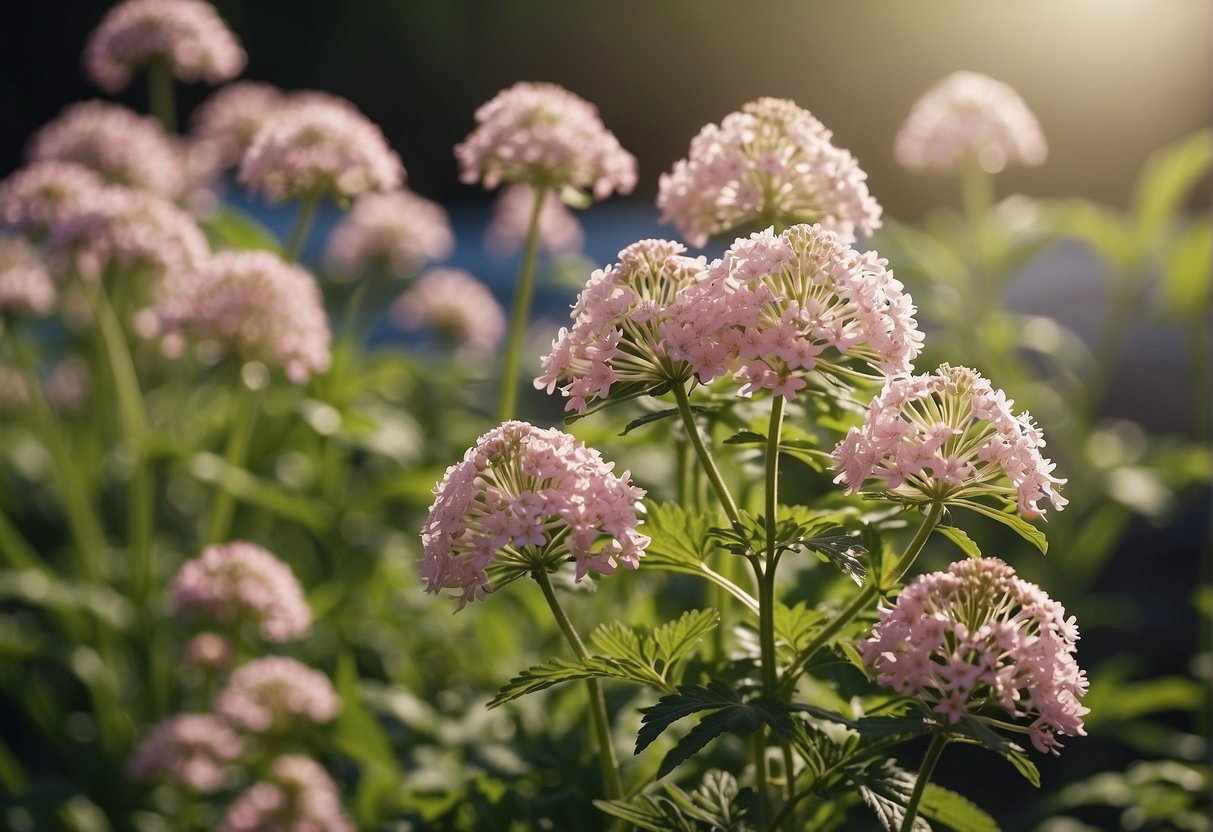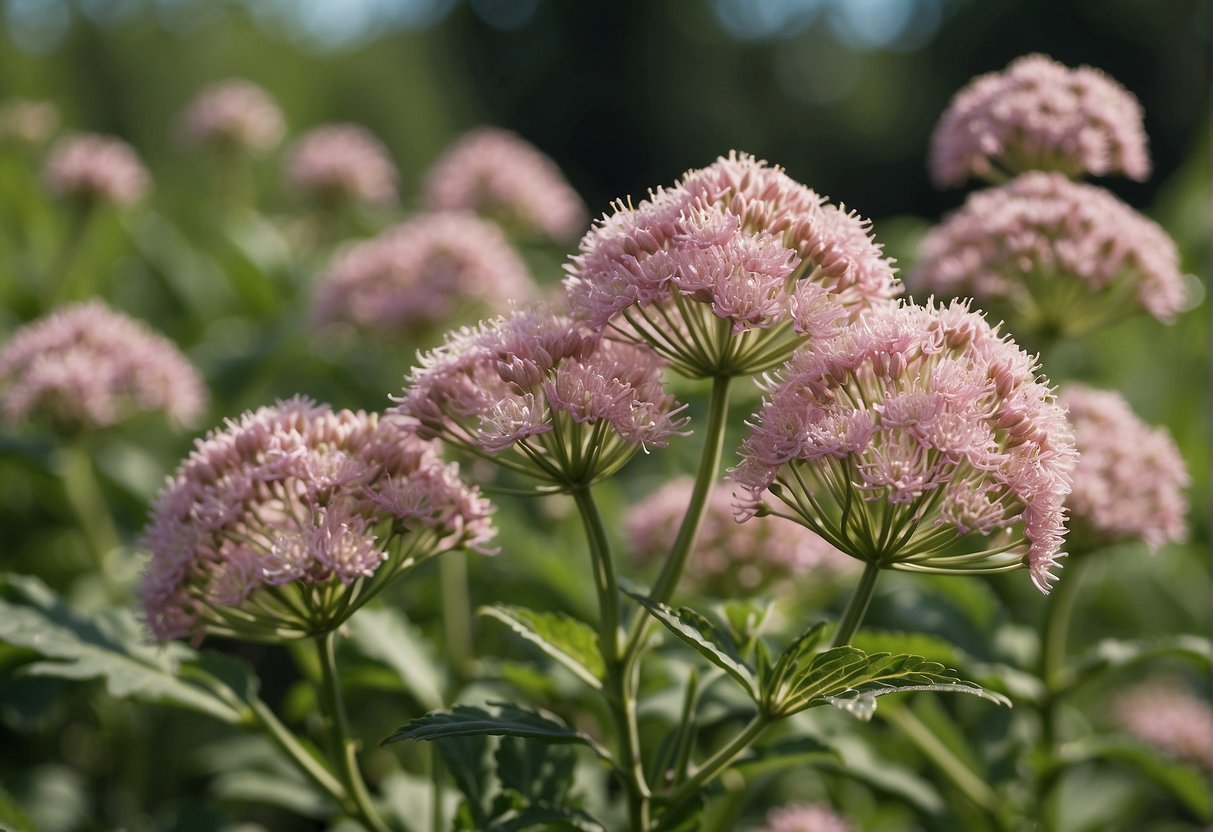Valerian , also experience as Valeriana officinalis , is a recurrent flowering plant that has been used for centuries as a born remedy for various ailments . The flora is native to Europe and character of Asia , but it has been introduced to North America and other part of the world . Valerian is specially known for its sedative holding , which make it a popular choice for those seek lifelike option to prescription sopor aid .
When it fall to growing valerian , there are a few factors to consider . Valerian prefers cooler temperatures and moist , well - drain soil . It can be grown in full Dominicus or partial spook , but it tends to do better in expanse with some shadiness . The plant can be grow from seminal fluid or propagated through stem cut , and it typically achieve due date in two to three years . While valerian is not a particularly hard plant to produce , it does demand some attention and attention to see to it that it flourish .
Valerian Basics
Valerian ( Valeriana officinalis ) is a hardy perennial herbaceous plant that is native to Europe and parts of Asia . It is also known as garden valerian , vulgar valerian , and all - heal . Valerian is a popular herbaceous plant that has been used for centuries for its medicative property .
Botanical Profile
Valerian is a improbable , erect works that can originate up to 5 feet magniloquent . It has a thickheaded , fleshy rootage scheme and a hollow stem . The leave of absence are sorry gullible and divide into pairs of cusp . Valerian produces small , fragrant blossom that are either white or pink . The flowers bloom in the summertime months and are followed by small-scale , chocolate-brown fruits .
Growing Seasons
Valerian grows best in cool , moist mood and opt full sun to partial shade . It can be grown in most types of territory but choose fertile , well - drained soil . Valerian can be propagated by seeded player or by dividing the root organisation .
Valerian is a hardy plant that can survive in temperatures as low as -30 ° F . It is best to found valerian in the spring or crepuscule . In the fountain , valerian should be planted as soon as the ground can be worked . In the fall , valerian should be plant at least 6 calendar week before the first Robert Lee Frost .
Valerian is a low - maintenance plant that need little aid once established . It should be water regularly but not over - water . Valerian should be fertilise once a year in the spring with a balanced fertiliser .

In conclusion , Valerian is a hardy perennial herb that grows good in cool , moist climates . It can be grow in most types of soil and is soft to care for once lay down . Valerian is a pop herb that has been used for centuries for its medicinal holding .
Optimal Growing Conditions
Valerian is a audacious plant that can spring up in a miscellanea of condition , but there are certain optimal originate conditions that can assist it boom . This section will cover thesoil prerequisite , sun and shade , and watering and moisture pauperization for growing valerian .
Soil Requirements
Valerian grows best in well - run out , damp stain that is rich in constitutive thing . The pH point of the soil should be between 5.5 and 7.0 , which is slightly acidulous to achromatic . It is important to control that the soil has good drain , as valerian does not endure quaggy dirt . Adding compost or well - rotted manure to the stain can serve better its fertility and structure .
Sunlight and Shade
Valerian prefers full sun to partial shade , but it can stomach some good afternoon shade in hotter mood . In areas with raging summers , it is good to cater some refinement during the hottest part of the day . Valerian can also raise well in arena with mottled spook , such as under Tree .
Watering and Moisture
Valerian require veritable lachrymation to keep the grime moist , but not waterlogged . It is crucial to control that the grunge has in force drainage , as valerian does not allow boggy grease . Overwatering can lead to root decomposition and other problems . During period of drouth , it is important to water valerian regularly to prevent the soil from drying out .
Overall , valerian is a stalwart plant that can grow in a variety of conditions , but it thrives in well - drained , moist grease with a pH story between 5.5 and 7.0 . It prefer full sunshine to partial shade and requires regular watering to keep the grime moist but not waterlogged . By providing these optimal grow condition , valerian can grow goodly , vigorous plants with abundant blooms .
Planting and Propagation
Valerian is a hardy perennial plant that can be propagated by seed or division . It is of import to choose the good location for constitute to ensure the idealistic farm conditions .
Starting from Seed
Valerian seeds can be sown in former bounce or spill . To germinate , the seeds require direct sunlight and well - drain territory . The seeds should be plant about 1/4 inch deep and spaced 12 inch apart . you should cover the seeds with a thin layer of grit or compost to avail with germination .
Valerian seeds can also be begin indoors in container . The containers should be fill with a well - draining dirt mix and placed in a location that receives lineal sunlight . The seedlings should be transplanted out of doors once they have maturate to a acme of 4 inches .
Division and Transplanting
Valerian can also be propagated through division . The best time to part the plant is in early give or fall . The works should be dug up and carve up into small-scale sections , ensuring that each section has a healthy root system .
The ideal location for planting valerian is in a spot that receives fond shade and has well - draining grease . The land should be enriched with compost and other organic matter to provide the flora with the necessary nutrients .
In conclusion , valerian can be easily propagated by germ or division . It requires a well - draining soil , direct sunlight , and fond wraith to originate properly . By come after these unproblematic rule of thumb , one can successfully grow valerian in their garden .

Maintenance and Care
Valerian is a hardy and low - upkeep plant that requires minimum care . However , to ensure optimum growth and output , a few introductory criminal maintenance and care practices must be follow .
Regular Upkeep
unconstipated care is crucial for the healthy growth of valerian plants . This includes removing any bushed or damaged leaves , stems , or flush regularly . Deadheading spent blooms is also necessary to encourage young growth and forestall seed production . It is near to do this as presently as the flowers have droop .
Managing Overgrowth
Valerian plant tend to grow smartly , and their radical can fan out quickly , make them potentially trespassing . Therefore , it is essential to monitor their increase and manage overgrowth regularly . To prevent overcrowding , it is best to dilute out the flora every two to three years . This can be done by grind up the plants and dividing the root clumps .
Valerian plants are susceptible to root rot and disease , especially during wintertime . Therefore , it is essential to check that the soil is consistently dampish but not waterlogged . Overwatering can lead to root rot , while underwatering can stimulate the flora to wither and die .
To keep up optimum territory moisture , consider irrigate the plant regularly during the growing season . The amount of water system postulate reckon on factors such as the rainfall , ground type , and temperature . A seasoned nurseryman can easily determine the watering penury of their valerian plants .

sum up organic issue , such as compost or perlite , to the soil can avail improve its social system and water supply - prevail capacity . This can also bring home the bacon essential nutrients to the plants .
Valerian plant can reseed themselves , but spread them through cuttings is also potential . It is best to circularise the plants in spring or nightfall .
In summary , valerian plants require minimal criminal maintenance and care . steady upkeep , managing giantism , and ensuring optimal soil moisture are essential for their salubrious growth . Adding constituent matter to the land and propagating the plant through cuttings can also help improve their increment and take .

Harvesting and Usage
Valerian is a herbaceous perennial that thrives in dampish filth . It is native to Europe and Asia , but it can now be line up grow in North America as well . Valerian root is the most usually used part of the plant , and it is harvested in the fall of the 2d twelvemonth of growing .
Collecting Valerian Root
When harvesting valerian radical , it is important to dig up the entire root system of rules , as the roots can produce quite mystifying . The roots should be washed and dried in the sun or a warm , well - ventilate area . It is important to plow the roots softly to avoid break them , as this can reduce their potentiality .
Medicinal and Culinary Uses
Valerian ascendant has long been used for its calming holding and is commonly used as a sleep aid . It is also used in herbal medicine to address anxiety and nervousness . In culinary program , the root can be brewed into a teatime or tally to soups and stews for its earthy , slightly bitter flavor .
Valerian root can be dry and stored in an airtight container for ulterior use of goods and services . It is authoritative to keep the dried radical away from sparkle and moisture to keep their medicative prop . When using dry valerian ascendant , you should hock it in hot water for 10 - 15 proceedings before consume to release its active compounds .
In increase to harvesting the entire rootage system , valerian can also be divided in the spring to propagate newfangled plants . Valerian is a hardy works that can grow in a variety of status , but it thrives in moist soils and partial shadowiness .

Overall , valerian is a various flora with many medicinal and culinary uses . Its tranquillize property make it a pop choice for treating insomnia and anxiety , and its vulgar flavor can add depth to a potpourri of dishes .
Frequently Asked Questions
What are the ideal climate conditions for cultivating valerian?
Valerian is a brave flora that can farm in a wide range of climate . However , it prefers cool temperatures and moist soil . Valerian grows in force in areas with a temperate climate , where the temperature ranges from 10 ° C to 20 ° C . It can also abide light-colored Robert Lee Frost and snow .
Can valerian be successfully grown indoors, and if so, how?
Yes , valerian can be grown indoors , but it requires a stack of care and attention . It needs a lot of illumination and a well - draining stain premix . The upright way to grow valerian indoors is to start with seeds and implant them in small pot . Keep the spate in a cheery spot and irrigate them regularly .
What are the steps to propagate valerian from seeds?
Valerian cum can be sow in at once into the ground in the outflow or surrender . The ground should be moist and well - drained . The seeds should be planted about 1/4 inch deeply and space about 6 inches aside . Valerian seeds can also be started indoors in modest pots and transplant outside when they are strong enough .
What are the common uses for valerian flowers?
Valerian flowers are often used to make tea , tinctures , and essential rock oil . They are also used in traditional medicine to handle anxiety , insomnia , and other wellness conditions . Valerian flowers are also used in scent and cosmetics .
Is valerian a perennial plant that regrows each season?
Yes , valerian is a recurrent plant that regrows each season . It can last for several year and can grow up to 5 foot tall . Valerian plant die back in the winter and regrow in the spring .
What are the benefits and methods of growing valerian for tea?
Valerian tea is a instinctive therapeutic for anxiousness and insomnia . To grow valerian for tea , establish the seed in a well - draining dirt premix and keep the stain moist . reap the flowers and leaves when they are fledged and dry them in a cool , dingy property . Once the flowers and farewell are juiceless , they can be used to make tea .